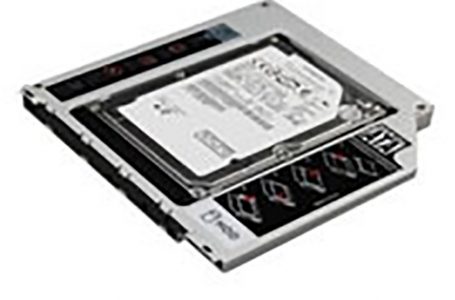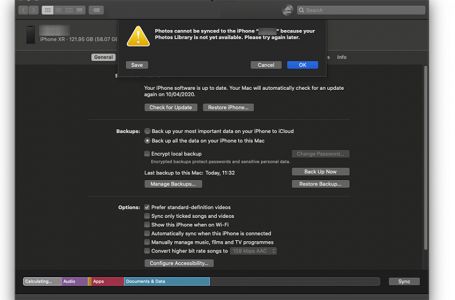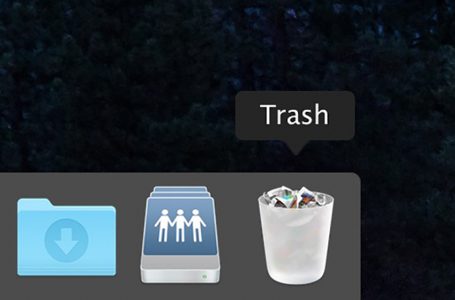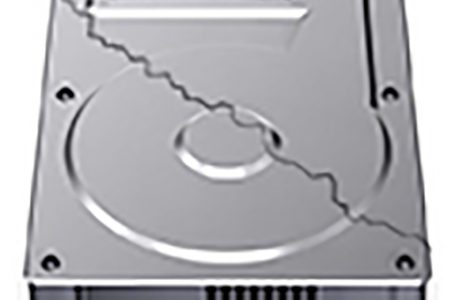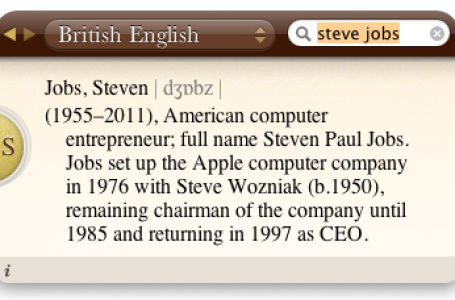Apple 13″ MacBook vs 15″ MacBook Pro
With Apple’s increasingly competitive pricing and the unchanny ability of Mac hardware to be able to run the three major platforms (Mac OS X, Windows and Linux), Apple appears poised to gain market share with its unique value proposition.
Whether you’re a new convert or a long time Mac user; once you reach the decision to purchase a Mac portable, you inevitably arrive at a unique crossroad of whether you should go for the 13″ MacBook or the 15″ MacBook Pro?
This article, hopes to provide some food for thought in your deliberations before you take the plunge. We will examine the price and performance points, as well as the long-term cost/benefits of your next Mac portable investment.
Facts And Fiction
Before we begin, lets deal with some of the myths. Just so you know what you’re getting yourself into:
- Whether you buy a MacBook or a MacBook Pro; they both run hot. Unlike the era of the PowerPC G4 powered Mac portables, Apple’s decision to switch to Intel has inevitably resulted in machines that run hotter than ever before – that’s usually the toss up for higher processing speeds/power.
- Macs are computers like Dell, IBM and HP; despite the superb marketing efforts by Apple, at the end of the day lets not lose sight of this and expect the ‘Rolls Royce’ of computers. Macs are not immune from the minor defects associated with mass produced electronic goods, so lets be realistic with our expectations.
- At press time, Apple’s Boot Camp is still a Beta release; which means that its undergoing testing where you as the end user is the ‘tester’. This is good to know for those of us who are looking to purchase a Mac for the sole purpose of running Windows. Apple has unequivocally represented that it will not and does not support usage of Boot Camp to run Windows. Running Boot Camp is at your own risk but having said that, the latest versions of Boot Camp (1.1.2 beta) are reported to have been suitably stable.
Now, that we’re more or less on the same page, lets dive right into the heart of the matter. Should we buy a 13″ MacBook or a 15″ MacBook Pro?
The confusion stems from the fact that both product lines are almost similarly hardware equipped. Its questionable why Apple has decided to place their product mix so closely together but both have the following hardware:
- Dual-Layer SuperDrive options
- FireWire 400 port
- USB 2.0 ports
- Ethernet 10/100/1000 BASE-T (Gigabit)
- Airport Extreme
- Bluetooth 2.0+EDR
- built-in iSight
- built-in omnidirectional microphone
- Front Row IR remote
- optical digital audio in/out
- video mirroring and extended desktop
- Sudden Motion Sensor data protection technology and;
- the lack of a built-in modemIts probably a good idea at this point to proceed to Apple’s MacBook and MacBook Pro specification comparison page. Print it out and have it by your side before you continue reading this article.
The 13″ MacBookThe 13″ MacBook is the current successor to the previous iBook G4 product line. To get your expecations right the first time, its good to know that the iBook product line has traditionally been targetted at the education market, as such it is built for this purpose in mind. Typical tasks expected from an iBook would be Internet associated activities (e.g. emailing and surfing), as well as getting class work done (e.g word processing, spreadsheets, presentations). The 13″ MacBook is no different in its genre and neither is the objective of its design.At press time, Apple ships three configurations of 13″ MacBook with minor differences in specifications between them. The distinct difference is the use of a Combo drive in the lowest end 13″ MacBook and the difference of white and black colours between the two higher end 13″ MacBooks.
Points to note about the 13″ MacBook.
At press time, it is kitted with an Intel Graphics Media Accelerator 950, which stripped of its fancy technical name, is a graphics processor that utilises shared memory resources as opposed to dedicated RAM for the graphics processor (present in the 15″ MacBook).
What this translates to for the end user, is that you need to pack the 13″ MacBook chock full of RAM to squeeze out maximum performance gains. This is because the MacBook does not have any onboard RAM (i.e. if you remove the RAM from the MacBook it will not run) and its entire architecture relies on the RAM that is installed for temprorary storage of data whilst it carries out its processing tasks. So, whether you’re doing spreadsheets or playing a graphic intensive game on your 13″ MacBook, the RAM used by the CPU or the graphics processorrespectively, is the same.
The current line of 13″ MacBooks have only two RAM slots available, where the maximum RAM that can be installed caps off at 2GB (i.e. 2 x 1GB RAM). The current Intel Graphics Media Accelerator 950 installed on all 13″ MacBooks utilises 64MB of RAM from the generic pool of RAM installed in your 13″ MacBook, leaving the remainder for other processing needs. Therefore, the logical conclusion is, having less RAM installed results in sluggish multi-tasking and graphics intensive activities.
The 13″ MacBook has a better battery life compared to the 15″ MacBook Pro. This is in line with its predecessors and is largely owing to less power drain from its smaller screen size and also less demanding processing needs from a marginally scaled down CPU and graphics processor configuration when compared to the 15″ MacBook Pro. Typical realworld battery life (despite Apple’s claim to 6 hours), averages out around 4.5 – 5 hours within the first 6 months and depreciates depending on use and battery care.
13″ MacBooks, like its predecessors also have better WiFi range than the 15″ MacBook. This is suspected to be so, owing to the use of polycarbornate in its design whilst the 15″ MacBook’s aluminium chassis has long been suspected for the significant difference in range. In general, the 13″ MacBook has about twice the WiFi range compared to the 15″ MacBook Pro.
The 15″ MacBook ProThe 15″ MacBook Pro is a direct descendant of Apple’s PowerBook G4 lineage and true to its heritage, is designed to fulfill the objectives of mulitmedia creative professionals. Apple has traditionally been a strong player in the design market prior to its recent change in focus to target the mass consumer market.As a result of its design brief, the 15″ MacBook packs more muscle under the hood. Both in terms CPU processing power as well as graphics acceleration. The larger 15″ screen also strikes the ‘sweet spot’ among creative professionals, providing the elusive balance between comfortable screen real estate to get design tasks done and portability. To top it off, its sleek aluminium finish provides that sexy appeal, whilst, maintaining a professional appearance at all times.
At press time, Apple offers two configurations of 15″ MacBook Pro, with differences in specifications that result in higher processing power directly corresponding to the investment required to purchase each model, respectively.
Points that stand out about the 15″ MacBook include the following.
Owing to its target market, the 15″ MacBook comes equipped with two flavours of graphics processors; the 128MB or 256MB GDDR3 SDRAM ATI Mobility Radeon X1600 (PCI Express). In factory trim, the 128MB GDDR3 is shipped with the lower end 15″ Macbook Pro whilst the higher end model ships with 256MB GDDR3. Currently, Apple does not offer custom configuration for the lower end model to be equipped with a 256MB GDDR3 ATI Mobility Radeon X1600 (PCI Express).
These graphics processors come equipped with dedicated RAM that are allocated to do nothing else but aid in carrying out graphics processing tasks. Understandably the 256MB GDDR3 SDRAM equipped ATI Mobility Radeon X1600 (PCI Express) will provide more bang for your buck compared to the 128MB GDDR3 SDRAM ATI Mobility Radeon X1600 (PCI Express).
When compared to the 13″ MacBook, the 15″ MacBook Pro has either 128MB GDDR3 or 256MB GDDR3 SDRAM dedicated to graphics processing, leaving the installed RAM (currently 1GB and 2GB on the lower/higher end models, respectively) for other processing tasks. This makes for an overall much faster architecture than the 13″ MacBook and is purpose built to handle gaphics intensive tasks. Because of the freeing of installed RAM for other processing needs, the 15″ MacBook Pro also handles multi tasking swifter than the 13″ MacBook.
The 15″ MacBook Pro shares a similar maximum RAM capacity as the 13″ MacBook, topping out at 2GB (2 x 1GB RAM).
When we consider, battery life, the 15″ MacBook Pro has a realworld battery life that averages out between 3.5 – 4.2 hours within the first 6 months (despite Apple’s claims of 4.5 hours). This, again will depreciate depending on use and battery care.
The higher battery consumption can be directly correlated to the 15″ MacBook Pro’s larger screen, as well has higher processing power.
As mentioned above, the 15″ MacBook Pro has a significantly smaller WiFi range than the 13″ MacBook.
Other significant differences in the 15″ MacBook Pro, stem from its exclusive Input/Output (I/O) ports available, which include:
- PCI Express slot x 1
- FireWire 800 port x 1
Narrowing Down The Scope: Pairing Buyers To MacBooksSeasoned from having to answer the many queries of potential 13″ MacBook and 15″ MacBook Pro buyers alike, the basic buyer can be loosely summed up into 3 distinct categories:
- the buyer who places ‘size’ and portability high on her list of wants
- the ‘power hungry’ buyer who wants maximum power from her portable and;
- the cautious switcher who is buying a Mac for the first time
At the moment, the ‘size’ sensitive buyer has little choice but to contend with the 13″ MacBook since no smaller incarnation of the MacBook Pro exists. If you are a ‘size’ sensitive buyer who desires a powerful Mac nonetheless, then its strongly advised to go for the highest end 13″ MacBook and deck it out with the maximum RAM that it can accomodate. However, as a point of interest, if you fall into this category, you should really take a peek at our recent article reporting the rumour of a smaller MacBook Pro in the makings.
The ‘power hungry’ buyer, on the other hand, should consider nothing less than a 15″ MacBook Pro. Which model to go for, is entirely subjective and largely decided by the buyer’s budget.
The cautious switcher on the other hand needs to read on to make her own decision. Much of the following is aimed at providing more information that, is hoped, to provide a better perspective to facilitate the best cost effective, long-term investment based on a buyer’s budget and desired use of a Mac portable.
Before we continue, there’s also one other unique class of buyer that has emerged since Apple went Intel. The odd, Windows user who is buying a Mac solely to run Windows.
To this class of persons, we implore you to re-think your course of action, (as much as we hate to say it) because you may be better served by purchasing a Windows PC-based portable outright rather than trying to make an ‘Apple into a lemon’, so to speak. Apple does not support Boot Camp and more so Windows. On top of that, there might be inevitable driver-related issues farther down the track, as well as, the loss of hard drive capacity from the necessity to install Mac OS X, so that Boot Camp and following that, Windows can be installed on your Mac. Buying a Mac without experiencing Mac OS X is, a shame and you might want to consider watching Apple’s switcher ads to quickly get an idea why. Macs are more secure and less prone to virus attacks (if at all) and come bundled with Apple’s iLife suite to manage your ‘digital lifestyle’ but that’s just the tip of the iceberg.
Simple Economics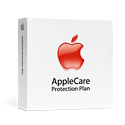
 Its sort of an ‘open secret’ that until now, the 13″ MacBook remains plagued with quality issues. Whilst, the 15″ MacBook Pros seem to be chugging along quite unperturbed. In light of this fact, 13″ MacBook buyers are strongly advised to factor in AppleCare as part of your future 13″ MacBook purchase. This helps cover your investment and relieves the headache associated with repair for three years from your date of purchase.
Its sort of an ‘open secret’ that until now, the 13″ MacBook remains plagued with quality issues. Whilst, the 15″ MacBook Pros seem to be chugging along quite unperturbed. In light of this fact, 13″ MacBook buyers are strongly advised to factor in AppleCare as part of your future 13″ MacBook purchase. This helps cover your investment and relieves the headache associated with repair for three years from your date of purchase.Having said that, buyers looking at the highest end 13″ MacBook might want to consider reaching for the 15″ MacBook Pro instead. The rationale is simple.
For buyers looking to purchase the current, highest end 13″ MacBook which retails at USD$1,499, factoring in AppleCare at USD$249, results in a total purchase price of USD$1,748. This effectively puts the budget USD$251 shy of the lowest end 15″ MacBook Pro which retails at USD$1,999. AppleCare is strongly recommended in the case of 13″ MacBooks and is a good option for 15″ MacBook Pros as well. If you’re willing to consider the highest end 13″ MacBook with AppleCare, its certainly worthwhile to go for the 15″ MacBook Pro and spend the following 12 months saving up for the AppleCare for MacBook Pros, which retails at USD$349.
This consideration is however moot, in the case of lower end 13″ MacBook buyers and ‘size’ sensitive buyers. Whichever, you choose, just bear in mind that there is a distinct build quality difference between the 13″ MacBook and the 15″ MacBook Pro. As far as longevity goes, at this point, the 15″ MacBook Pro would seem the best option that should keep any buyer happy for years to come.




